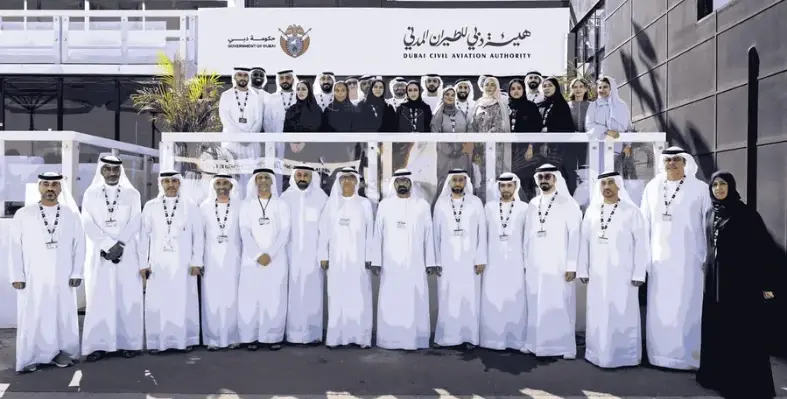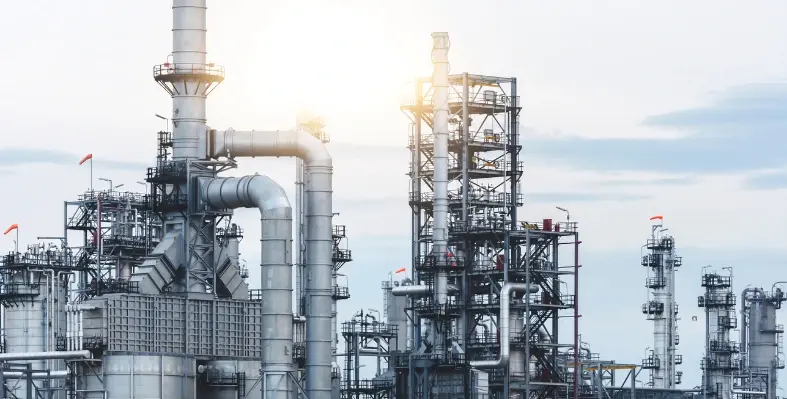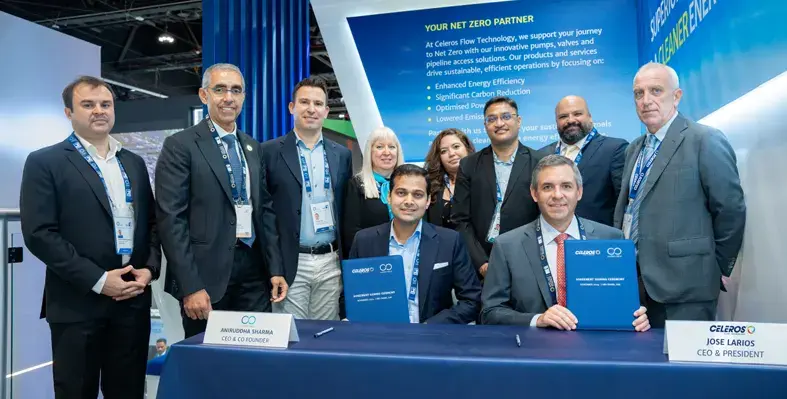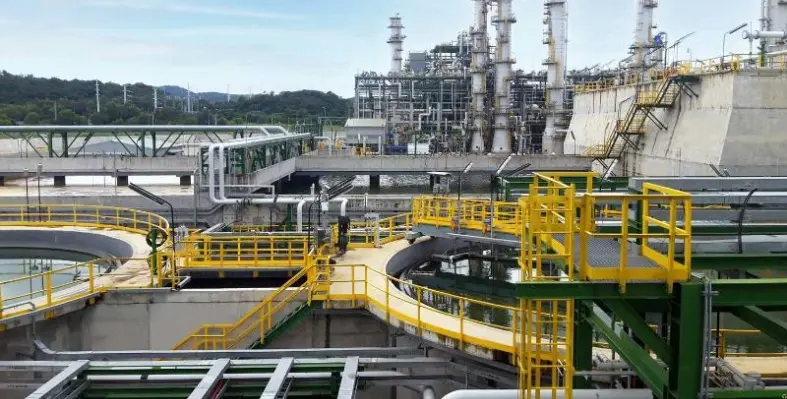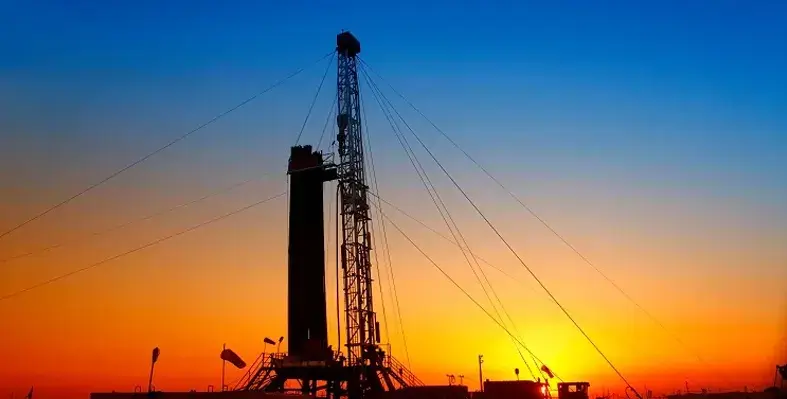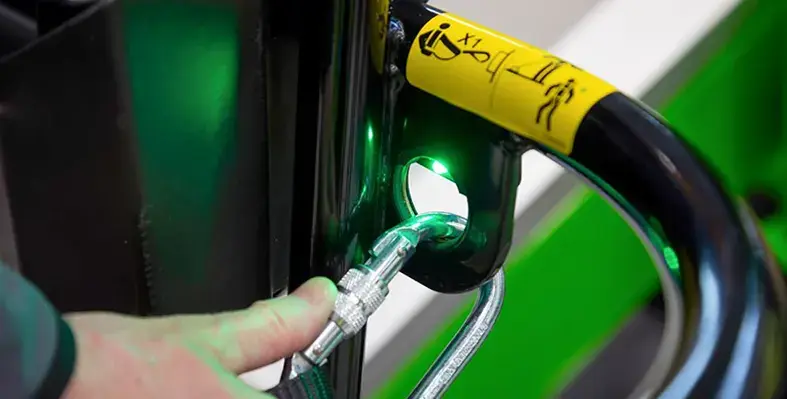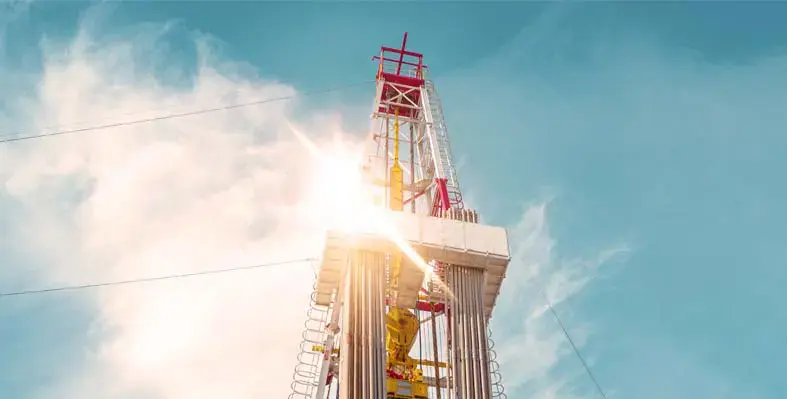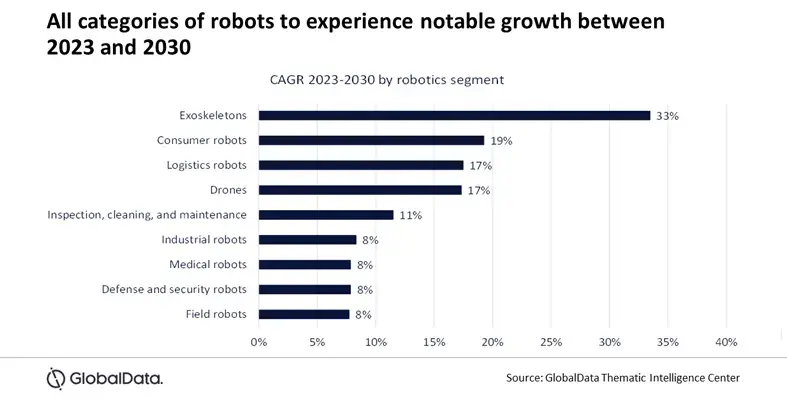Industrial
Industrial
- Details
- Sania Aziz
- Industrial
- Date: 21 November, 2025
- Year: 2025
Dubai Civil Aviation Authority (DCAA), one of Dubai’s key aviation regulators, has wrapped up its participation at the Dubai Airshow 2025 with a strong international showing that reinforced the emirate’s status as a global centre for aviation excellence and technological innovation.
The event, staged at Dubai World Central from 17-21 November under the theme “The Future Begins Here,” marked another significant step in the rapid expansion of both the aviation and space sectors.
During the Airshow, DCAA achieved several important milestones, led by the signing of two Memoranda of Understanding with Dubai Police and Dubai Customs. These agreements are designed to strengthen institutional collaboration and align efforts to uphold the highest levels of safety, security and operational efficiency across Dubai’s airspace.
The partnerships will focus on creating new frameworks for operational coordination, sharing expertise and critical information, and developing joint initiatives that contribute to long-term sector sustainability. The move aligns with Dubai’s wider ambition to build a smart, unified and future ready aviation ecosystem.
Commenting on the occasion, H.E. Mohammed Abdulla Lengawi, Director General of the Dubai Civil Aviation Authority, stated: “The remarkable success of the Dubai Airshow 2025 reflects the Authority’s firm commitment to supporting innovation and enhancing the sustainability of the aviation sector. This year’s edition provided a global platform for knowledge exchange and partnership-building, demonstrating the sector’s resilience and its ability to evolve. The Memoranda of Understanding signed by the Authority represent an important step toward a more efficient and innovative future, further strengthening Dubai’s position as a leading global centre for civil aviation. This aligns with our continued efforts to elevate operational efficiency and enhance security and safety standards across the UAE’s airspace.”
- Details
- Sania Aziz
- Industrial
- Date: 20 November, 2025
- Year: 2025
Across the Middle East, Africa and South Asia, rapid urban expansion is reshaping economies at an extraordinary pace. With the United Nations forecasting that nearly 68% of the world’s population will live in cities by 2050, Africa in particular faces surging demand for housing, transport networks and large-scale urban infrastructure
As construction activity intensifies, industry stakeholders are turning to Big 5 Global (www.Big5Global.com) to source technologies and solutions that reinforce supply chains, boost efficiency and support sustainable development.
Welcoming participants from more than 165 countries, with 70% of solutions presented by international exhibitors, Big 5 Global serves as a gateway linking the region's construction community with a worldwide ecosystem of manufacturers, suppliers and technology providers.
Strengthening supply chains for project delivery
Big 5 Global hosts 2,800 exhibitors and showcases over 60,000 products, systems and services designed to enhance the reliability of construction operations. International pavilions from Germany and Italy return with advanced building materials such as high-performance concrete, cement, marble and stone technologies. India expands its presence with innovative MEP and smart construction systems suited for large projects across the Middle East and Africa. Austria and Pakistan also rejoin the event, displaying modular building solutions, interior systems and cost-efficient MEP technologies that streamline execution. Additional exhibitors from Armenia, Croatia, Hungary, Jersey, New Zealand, Norway and Serbia further widen procurement options for buyers seeking resilient and diversified sourcing channels.
With regional demand rising, digital technologies are rapidly transforming procurement and project execution.
Technology reshaping procurement and construction workflows
At Digital Construction World, leading companies such as Autodesk, Nemetschek Group, Odoo, Premier Construction Software, Procore Technologies, RIB Software and Trimble highlight digital tools that improve transparency and coordination across supply chains. Odoo offers an integrated suite linking procurement, HR and operations, while Premier Construction Software simplifies budgeting and project management. Trimble demonstrates automated solutions that reduce site rework by up to 25%, directly improving project timelines and profitability. Meter Technology showcases its fully integrated digital platform that modernises surveying and engineering workflows by removing long-standing inefficiencies.
Ahmed Al-Ansary, chairman, founder and CEO of Meter Technology, commented, “Meter transforms surveying and engineering from traditional to tech-driven. As the world's first fully integrated digital platform, we've eliminated decades-old inefficiencies. Our AI-powered system completes complex projects within 48 hours with exceptional precision across nine countries. Big 5 Global offers the opportunity to connect with industry leaders and explore sector development worldwide under ‘From the UAE to the World’, where geospatial and engineering digital innovation forms the foundation of real estate sustainability.”
Sustainable manufacturing and advanced material innovation
Several global exhibitors are also reimagining material production, transportation and reuse to reduce environmental impact. China introduces a new Eco-Friendly Zone built entirely from recyclable materials and dedicated to low-carbon construction solutions.
Grundfos Gulf Distribution highlights high-efficiency pumping systems designed to cut water and energy consumption. Deewan Equipment Trading LLC presents modular and precast manufacturing plants that reduce onsite waste and speed up project timelines. Hitech Concrete Products showcases precast hollow-core and insulated wall systems engineered for superior thermal performance and lower material use.
GF returns with advanced MEP and sustainable building technologies that support efficient construction and environmentally conscious project delivery. "The region is pursuing one of the world’s most ambitious development programs, where sustainable water management is key to realizing this vision. GF is uniquely positioned to support this progress through its comprehensive solutions portfolio, our local presence including manufacturing, offsite-manufacturing and customer experience facilities, long-standing regional partnerships and dedicated teams who understand the market’s unique challenges," said Michael Rauterkus, executive committee member of GF and president of GF Building Flow Solutions.
These collective contributions are helping the UAE build smarter cities aligned with long-term net-zero ambitions.
“As rapid urbanisation increases demand for project efficiency, quality and delivery, the global construction landscape must accelerate efforts toward net-zero goals and cross-sector collaborations,” said Josine Heijmans, senior vice-president, dmg events. “Big 5 Global continues to connect government entities, international manufacturers and regional stakeholders, helping strengthen construction supply chains and advance sustainable growth across the built environment.”
- Details
- Louise Waters
- Industrial
- Topic: Industrial
- Region: Middle East
- Date: 12 May 2025
- Year: 2025
Honeywell has launched a new gas detector assembly line at the Masdar Innovation Center in Abu Dhabi, in alignment with the UAE’s industrialisation and localisation objectives
This will focus on the assembly of Honeywell’s RAEGuard 3 Series – fixed toxic and flammable gas detectors using advanced sensor technology – along with the BW Clip Series of portable, single-gas detectors. Designed to protect industrial workers operating in potentially hazardous environments, these gas detectors will serve local and regional customers.
The new assembly line supports the ‘Make it in the Emirates’ campaign by expanding local manufacturing capabilities, creating jobs, upskilling local talent and accelerating technology transfer, strengthening the UAE’s position as a hub for advanced industrial technology. It will also support Operation 300Bn, the UAE’s strategic initiative to grow the industrial sector’s contribution to GDP from AED 133 billion to AED 300 billion by 2031.
“Honeywell has been a longstanding partner of the UAE, committed to empowering local industry and enabling economic diversification,” said George Bou Mitri, president, Honeywell Industrial Automation, Middle East, Turkey, Africa, Central Asia. “The launch of our new gas detector assembly line represents more than an expansion of our manufacturing footprint – it’s a step forward in shaping a smarter, safer, and more sustainable industrial future for the UAE.”
Honeywell opened the dedicated Masdar Innovation Center in Abu Dhabi’s Masdar City in 2019 to focus on local assembly, integration, and testing of advanced automation technologies. It enables faster delivery, local customisation, and technical support for customers across the UAE and wider Middle East, achieving full marks last year in the UAE’s Industrial Technology Transformation Index (ITTI), a national benchmark for digitalisation and sustainability excellence.
- Details
- Sania Aziz
- Industrial
- Topic: Industrial
- Date: 16 December, 2024
- Year: 2024
In an effort to spur expansion throughout the continent, Teledyne Gas and Flame Detection (Teledyne GFD) has appointed a new vice president of sales and marketing for the Americas.
Gerald V. Sims will assist Teledyne Gas and Flame Detection in further growing its market share in this significant geographic market thanks to his extensive experience in gas utilities and his proven track record of sales leadership.
Over many years, Teledyne GFD has been expanding throughout the Americas. Teledyne Detcon, the company's US manufacturing facility in Cypress, Texas, has been offering industrial-grade gas detectors, control systems, analysers, and wireless technologies to the gas detection market for more than 40 years.
“Gerald will use his expertise and deep industry knowledge to play a pivotal role in maximising our growth potential and enhancing the presence of our product brands across the Americas,” said Thibault Fourlegnie, vice president and general manager, Teledyne Gas and Flame Detection. “We’re excited to see the gains that Gerald can provide, not just for Teledyne Gas and Flame Detection, but also for our customers. After all, an even stronger Teledyne Gas and Flame Detection is beneficial for stakeholders up and down the supply chain, including distributors and end users.”
- Details
- Sania Aziz
- Industrial
- Topic: Industrial
- Date: 27 November, 2024
- Year: 2024
Celeros Flow Technology (Celeros FT) and Carbon Clean signed a partnership agreement at ADIPEC to accelerate the deployment of carbon capture technology in hard-to-abate industries
Under the partnership agreement, both companies will collaborate to develop industrial-scale carbon capture solutions. It will see Celeros FT combining its application knowledge and technical engineering pedigree with Carbon Clean’s specialist expertise in carbon capture solutions, specifically Carbon Clean’s patented Cyclone CC technology, which is columnless, compact and modular, delivering high performance while significantly reducing the cost of carbon capture compared to conventional solutions.
Celeros FT, which provides engineering and fabrication services based on more than 140 years of experience, will leverage its extensive sales and aftermarket support network to support the decarbonisation goals of existing and new customers.
The agreement represents further progress towards Celeros FT’s ambition to become a full chain supplier to the Carbon Capture and Storage (CCS) sector and adds industrial carbon capture technology to its portfolio of specialist CO2 transportation pumps and injection pumps for storage.
Jose Larios, CEO & president, Celeros FT said, “Celeros Flow Technology recognises the challenges that the energy transition raises for customers. This partnership further underlines our commitment to developing fully customised lifecycle solutions that respond to the diverse process challenges of transitioning from fossil fuels to renewable resources. We are excited by the prospect of working collaboratively with Carbon Clean to deliver modular, compact, and scalable solutions for carbon capture across our chosen markets.”
Aniruddha Sharma, chair and CEO, Carbon Clean, commented, “Our fully modular, columnless technology will transform the industrial carbon capture sector – solving the longstanding cost and space barriers. The Carbon Clean team have delivered a breakthrough and we are excited to partner with Celeros Flow Technology for manufacturing and fabrication. This partnership will play a significant role in accelerating the number of deployed units, enabling CycloneCC technology to be fully commercialised and rolled out at scale.”
- Details
- Sania Aziz
- Industrial
- Topic: Industrial
- Date: 26 November, 2024
- Year: 2024
Cannon Artes is constructing an advanced wastewater treatment and water reuse plant within one of the largest petrochemical complexes in the Middle East.
The facility, designed to support the water recovery requirements of a major polyolefin plant in Qatar, will process up to 25,000 cubic metres of effluent and cooling-tower-blow-down water daily. With a recovery capacity of 780 cubic metres per hour, the plant significantly reduces discharge rates, achieving nearly 80% water reuse.
This far exceeds regulatory standards. The facility is part of a nearly US$2bn project to establish a new polyethylene plant. The plant, designed with two polymerisation units and an annual capacity of nearly 2 million tons, incorporates advanced membrane technologies to manage industrial wastewater and cooling water blowdown.
Industrial effluents are treated using Cannon Artes’ proprietary EmbioArt Membrane BioReactor (MBR), while cooling water blowdown is processed with ultrafiltration (UF) and reverse osmosis (RO) technologies. The facility has a total treatment capacity of approximately 1,000 cubic metres per hour.
The project also includes a 600 cubic metre-per-hour remineralisation plant, equipped with six advanced calcite filters. This system increases pH and reduces the corrosivity of recovered water, setting a new benchmark for industrial remineralisation technology.
Sustainable operations
The Qatar project highlights Cannon Artes’ capability to execute large-scale, complex contracts. The company handled every aspect, from process design to procurement, manufacturing, assembly, testing, and delivery. All components were customised to meet client specifications, integrating cutting-edge technologies like EmbioArt MBR, UF, and RO for maximum efficiency and environmental sustainability.
Construction commenced in August 2024, with infrastructure expected to be completed within six months by early 2025. Full mechanical completion is slated for Q4 2025, demonstrating an impressive timeline given the project's complexity.
With projects delivered in more than 80 countries, the company has provided customised solutions to industries including oil and gas, chemicals, pharmaceuticals, textiles, and food and beverage, solidifying its reputation for excellence in industrial water management.
“Cannon Artes was chosen as the supplier of choice earlier this year, due to our proven ability to deliver large-scale and complex industrial wastewater treatment solutions that meet the highest environmental and efficiency standards,” said Alessio Liati, sales director at Cannon Artes. “To give an idea of the project’s scale, the water treatment plant alone spans an area comparable to three football fields, with more than 1,600 reverse osmosis membranes, 360 ultrafiltration modules, and over 17,000 sqm of active MBR membrane surface.”
- Details
- Sania Aziz
- Industrial
- Topic: Industrial
- Date: 22 November, 2024
- Year: 2024
Following the launch of the Oil & Gas Decarbonization Charter (OGDC) at COP28, oil and gas companies are accelerating efforts to track, monitor and control their methane emissions
Eni has been awarded “Gold Standard reporting” of the Oil and Gas Methane Partnership 2.0 (OGMP 2.0) for its commitment to reporting emissions at the highest data quality levels. OGMP 2.0 is an initiative of the United Nations Environment Programme’s International Methane Emissions Observatory, aimed at setting the global standard for methane accountability and transparency in the oil and gas sector as a necessary step to effectively track and target mitigation with measurement-based data. Eni has been awarded “Gold Standard reporting” for having effectively reached highest data quality levels.
Eni has set itself the goal to reach near zero methane emissions by 2030, in line with the OGDC objectives, and has more than halved methane emissions between 2018 and 2023. Eni’s Upstream methane intensity of 0.06% in 2023 places the company among the leaders in the sector. A founding member of the UNEP Oil & Gas Methane Partnership (OGMP), the Oil and Gas Climate Initiative (OGCI) and Methane Guiding Principles (MGP), the company is signatory to the OGDC as well as the Global Flaring and Methane Reduction trust fund (GFMR), an initiative launched by the World Bank to support governments and operators in developing countries to eliminate routine flaring and reduce methane emissions from the O&G sector to near zero by 2030. Eni has also signed collaboration agreements with National Oil Companies (NOCs) aimed at sharing its industry-leading experience in methane management to enable methane reduction across the sector.
Meanwhile TotalEnergies, which is also aiming for near-zero methane emissions by 2030, has announced that the company is going a step further in the monitoring and reduction of its methane emissions with the deployment of continuous, real-time detection equipment at all of its operated Upstream sites, enabling real-time identification of methane emissions, both fugitive and stationary, and immediate corrective actions to stop them. This continuous detection plan will be fully implemented by end-2025 and will use existing and proven technologies such as loT2 sensors, InfraRed cameras, flowmeters and Predictive Emissions Monitoring Systems on combustion sources.
The company will meet as soon as this year its target to reduce emissions by 50% compared to 2020, a year ahead of plan as a result of numerous initiatives, including the successful deployment of its AUSEA drone campaigns.
“Slashing methane emissions is a short-term priority to contribute to the fight against climate change. Continuous, real-time detection will enable our operators to act in an even more decisive manner in order to reduce our methane emissions and to repair leaks to achieve our near-zero methane emissions ambition. As a champion of the Oil & Gas Decarbonization Charter (OGDC), I am proud that TotalEnergies is leading the way in deploying such equipment at large scale and we will continue to work with the industry to share best practices in measuring and fighting methane emissions”, said Patrick Pouyanné, chairman and CEO of TotalEnergies.
See also https://oilreviewmiddleeast.com/energy-transition/positive-progress-towards-ogdc-goals
- Details
- Sania Aziz
- Industrial
- Topic: Industrial
- Date: 11 November, 2024
- Year: 2024
Niftylift has unveiled ClipOn, a retrofittable safety device that offers access platform operators clear visual and audible cues to connect their harnesses before operating machinery.
Designed for Niftylift’s entire HeightRider range, ClipOn activates as soon as the key switch is turned on, alerting operators if they attempt to operate without securing their harness.
Red LED lights above connection points indicate an unfastened harness, and an alarm will sound if the operator tries to move the machine without proper attachment. Once the harness is secured, the LEDs turn green and the alarm ceases, ensuring a clear signal of safety compliance.
Reducing injuries
ClipOn’s visibility extends to ground teams with under-basket LEDs, signalling whether the operator is harnessed correctly, reinforcing safety protocols on-site.
The system integrates seamlessly into both new and existing Niftylift fleets and instals with ease using only three components—the control box, harness sensor, and light array. Its operation is intuitive, similar to seat belt alert systems in vehicles, making adoption straightforward for operators.
Effective safety protocols are essential, especially in high-risk sectors like working at height, where falls are a leading cause of workplace injuries.
Systems like ClipOn, with its simple yet powerful reminders, provide critical assurance for operators, managers, and site owners. ClipOn not only enhances safety but also simplifies inspection and compliance checks, offering a streamlined and unobtrusive safety solution that sets a new standard in access platform safety.
“Working at height inevitably involves risks, with falls being one of the most frequent causes of workplace injuries. That’s why ClipOn is crucial. Safety shouldn’t be complicated, and by ensuring every operator is securely harnessed before operating the machine, we’re making a simple but significant move towards eliminating the risk of falls from height,” said John Keely, managing director at Niftylift.
- Details
- Sania Aziz
- Industrial
- Topic: Industrial
- Date: 31 October, 2024
- Year: 2024
CS Combustion Solutions recently enhanced the capacity and efficiency of a sulfuric acid production plant located in Africa’s Copperbelt region, where demand for sulfuric acid is crucial in mining applications such as leaching copper and cobalt
Faced with growing demand, the plant needed to increase production while reducing operational costs and improving reliability. Through targeted improvements, CS increased daily production from 2,200 to 3,000 tons and optimised the plant’s overall performance.
Challenges before optimisation
Prior to the upgrade, the plant faced several challenges, including incomplete combustion, which led to sulfur droplets fouling downstream equipment like the waste heat boiler (WHB) and catalyst beds, increasing system pressure and requiring frequent shutdowns for maintenance. Clogging issues with conventional pressure atomisers resulted in frequent, costly nozzle replacements, while poor droplet atomisation caused hotspots in the refractory lining, increasing wear and reducing reliability.
Key measures implemented
CS Combustion Solutions tackled these issues with the following measures:
1. Ultrasonic atomisation: Replacing pressure atomisers with ultrasonic nozzles reduced droplet size from 400 to 110 µm, which minimised fouling, improved combustion, and protected the refractory lining from localised heat.
2. Swirl bodies: Introducing swirl bodies created rotational motion in the combustion air, enhancing flame formation and leading to more efficient sulfur combustion.
3. VectorWall installation: Replacing the plant’s original baffle walls with a VectorWall improved mixing within the combustion chamber, reduced hotspots, and prevented unreacted sulfur carryover to downstream components.
4. CFD analysis: A Computational Fluid Dynamics (CFD) study simulated and optimized the modifications prior to implementation, ensuring targeted performance improvements.
Results and benefits
With these enhancements, the plant boosted production capacity by 30%, enabling 40 tons of sulfur incineration per hour. The new configuration allows maintenance of sulfur guns without stopping operations, reducing downtime and saving US$160,000 annually by decreasing pressure drop. Additionally, precise ultrasonic atomisation prevented sulfur buildup on the refractory, extending its lifespan.
This case study highlights the importance of innovative combustion technologies and detailed pre-implementation analysis, offering valuable insights for facilities facing similar challenges in optimising sulfuric acid production.
- Details
- Sania Aziz
- Industrial
- Topic: Industrial
- Date: 30 October, 2024
- Year: 2024
Halliburton has launched SandTrap XL consolidation service for sand control, a chemical resin consolidation technology to stop the production of formation sand
SandTrap XL sand control service employs an externally activated, low-viscosity resin system that provides consolidation strength to the formation grains without compromising rock permeability. Unlike internally activated resin systems, there are no restrictions on pumping or activation time to allow treatment of longer intervals.
The SandTrap XL system excels in the treatment of high-clay content minerology up to 25% and adapts to various formation mineralogies. It provides thermal stability above 550°F (287°C). This allows it to control sand in heavy oil reservoirs under enhanced oil recovery methods, such as steam flooding. As part of Halliburton’s portfolio of remedial solutions, SandTrap XL mitigates solids production, including formation sand and fines migration. This approach helps ensure the long-term stability and productivity of oil wells to address the needs of operators in diverse geological environments.
“Excessive sand production remains an issue in our industry,” said Luke Holderman, vice president, Production Solutions and Pipeline & Process Services. “SandTrap XL empowers our customers to maximise asset value through enhanced well performance and extended asset life. Through customised chemical consolidation, SandTrap XL provides a reliable solution for mature fields and unconsolidated reservoirs to ensure long-term productivity and efficiency.”
- Details
- Sania Aziz
- Industrial
- Topic: Industrial
- Date: 29 October, 2024
- Year: 2024
Eni and BP have resumed their exploration activities in Libya after halting drilling operations in the onshore region in 2014, according to Libya’s National Oil Corporation (NOC)
This follows the formal revocation of force majeure status by Eni and NOC in August 2023 on exploration areas A&B (onshore) and C (offshore), where Eni is operator with 42.5% along with bp (42.5%) and Libya Investment Authority (15%), as a result of a favourable security assessment. Some of these areas are close to the Wafa gas facilities that export production to Italy.
On October 26, Eni began its exploration activities in the Area B (96/3) of Ghadames Basin, where the first exploratory well, A1-96/3 (Hasheem Prospect), was drilled. This well is the first under the contractual obligations for Area B in Ghadames Basin, according to the Fourth Bid Round Contract of 2007. Mellitah Oil & Gas, which has extensive experience in the region, particularly in developing and managing the Wafa field, is overseeing the drilling operations and all related activities for this well.
Several promising geological formations in the A1-96/3 well are set to be tested, which are expected to contain both oil and gas. The well is projected to reach a final depth of approximately 3,147 m.
The A1-96/3 well is located around 35 km from the Wafa field and approximately 650 km from the capital, Tripoli.
Eni is the leading international gas producer in Libya, where it has been operating since 1959, and currently has a large portfolio of assets in exploration, production and development. Production activities are operated through the joint venture company Mellitah Oil and Gas BV (Eni 50%, NOC 50%).
Repsol and OMV are also set to restart operations sin the Murzuq Basin and Sirte Basin respectively, NOC says.
- Details
- Sania Aziz
- Industrial
- Topic: Industrial
- Date: 18 October, 2024
- Year: 2024
Data and analytics company GlobalData has released a thematic report, Robotics in Oil and Gas, which highlights the role of major oil and gas companies, such as ADNOC, BP, Eni, Equinor, ExxonMobil, Repsol, Rosneft, Shell, and TotalEnergies in the development and adoption of robotics to enhance safety and productivity on the field
With the applications of robotics continuously evolving, the oil and gas industry has emerged as a significant adopter of the technology to improve safety and efficiency of operations. According to the GlobalData report, robots equipped with advanced technologies are yielding increasingly positive results, bringing a continued transformation in the operations of oil and gas companies.
Ravindra Puranik, oil and gas analyst at GlobalData, said, “Robots are proving invaluable to execute complex tasks at production facilities, thereby protecting workers from hazardous environments and reducing the likelihood of costly shutdowns. As a result, companies such as Equinor, TotalEnergies, and Shell are deploying them to work alongside humans on offshore sites. For instance, robotic automation can manage remote operations, such as those conducted on Equinor's Oseberg H platform in the North Sea. Their ability to perform repetitive and mundane tasks with minimal errors is saving time and internal resources for companies. Furthermore, it allows them to deploy field technicians on more critical issues.”
Oil and gas operations are labor-intensive and involve numerous repetitive tasks, many of which occur in hazardous environments and face various obstacles. Robotics presents an excellent solution to many challenges within the industry, as they can handle more strenuous tasks and complex procedures more effectively than humans.
Puranik said, “Robots provide greater reliability and efficiency in completing assigned tasks while also enhancing operational safety. The integration of terrestrial, aerial, and underwater robots is already playing a crucial role in several high-stakes oil and gas projects throughout the value chain. French oil major TotalEnergies, in collaboration with Oceaneering, recently conducted a pilot inspection of subsea pipelines in the North Sea using autonomous underwater vehicles (AUVs).”
Robots can access hard-to-reach areas, carry out tasks beyond human capabilities, and operate continuously without needing breaks. Hence, they are being utilized as effective solutions for conducting inspections in difficult or hazardous environments, thereby avoiding preventing human exposure to such sites. Recently, cleaning of storage tanks is emerging as another prominent use case for robotics with companies, such as Saudi Aramco, Woodside, SK Innovation, and Indian Oil Corp, exploring the potential of robotic crawlers in this application.“Advancements in technology have equipped robots to effectively replace field personnel on oil rigs. Additionally, there is an increase in collaboration between oil and gas companies and technology vendors, enabling the diversification of robotic use cases with the integration of AI, IoT, cloud, and edge computing. These developments are anticipated to drive future growth in robotics within the oil and gas sector, reducing risks to human workers who operate alongside heavy machinery in often remote and challenging environments,” said Puranik.
